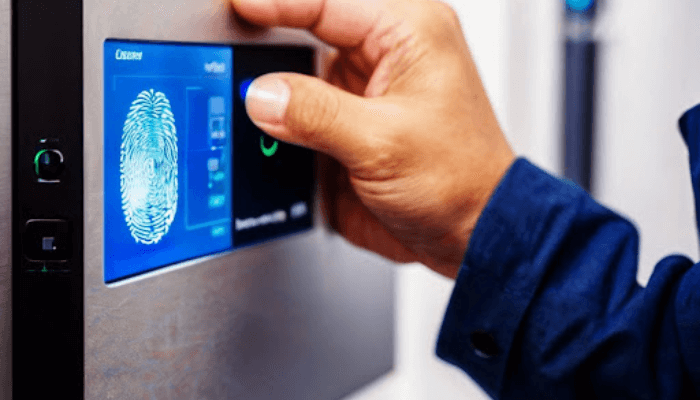Biometric Authentication in Fintech: Ensuring Security in Digital Transactions
The explosive growth of financial technology (fintech) is preparing the world for another evolutionary ride. Like other things influenced by technology and digitization, fintech encourages faster, more convenient, and easily accessible financial transactions.
This is particularly evident in the gambling sector, where players can easily deposit into their casino accounts or make withdrawals from the comfort of their phones. If you have already enjoyed https://www.slotozilla.com/free-slots and are looking for a new experience, the integration of fintech in online casinos significantly improves the gaming atmosphere.
However, fintech’s rise and growth have led to various concerns about fraud and insecurity. So, stakeholders have also evolved the industry, introducing measures to combat these well-founded concerns easily. Biometric authentication is one of fintech’s most significant measures for tackling insecurity.
How Does Biometric Authentication Work?
Understanding how biometric authentication works is essential when grasping the full scope of its impact on fintech. This technology uses traits peculiar to individuals to lock and authenticate their access to a particular space. These traits are hard to copy or access, making them unique and secure.
Unlike traditional authentication methods like tokens, PINs, or passwords, stealing or guessing biometric traits is hard or impossible. Owners do not have to worry about being locked out for forgetting these access methods, making compromising difficult.
| Biometric Modality | Working Mechanisms | Common Devices |
| Fingerprint recognition | Captures and analyzes unique patterns of ridges and valleys on a fingertip using a fingerprint sensor | Smartphones, laptops, biometric ATMs |
| Facial recognition | Uses cameras and software algorithms to map facial features and compare them with stored data | Smartphones, security cameras, laptops, access control systems |
| Iris scanning | Captures high-resolution images of the iris and analyzes unique patterns | Border security systems, access control systems |
| Voice recognition | Analyzes vocal characteristics such as pitch, tone, and cadence to authenticate the speaker | Smartphones, virtual assistants, customer service lines |
| Behavioural biometrics | Monitors patterns in user behaviour, such as typing rhythm, mouse movements, and gait, to authenticate the individual | Computers, smartphones, online banking platforms, security systems |
Benefits of Biometric Authentication to Fintech
Biometric authentication is very popular in fintech. Its popularity is based on its numerous impacts on the industry. Several reputable organizations, such as Apple Pay, HSBC Holdings, Banco Bilbao Vizcaya Argentaria (Spanish Bank), etc., have successfully implemented it and gotten excellent results. Below are notable impacts of this innovation on fintech:
Enhanced Security
Biometric authentication methods are more secure than their traditional counterparts. They cannot be stolen, guessed, or copied. Instead, they are unique to individuals and can only be wielded by the owner. As such, you can rest assured, even if someone with malicious intent gains access to your account information or knows your passwords.
User Convenience
With this innovation, customers no longer need to remember complex passwords or carry burdensome cards that can get lost, stolen, or forgotten. Instead, they can easily access and activate their accounts anywhere without any safety concerns. Biometric authentication increases users’ satisfaction, streamlines processes, and reduces challenges.
Fraud Prevention
Fraud prevention is a major catalyst for biometric authentication adoption. From detection to prevention, this technology’s role in enhancing system security is immeasurable.
Many organizations use multi-factor authentication to constitute a multiple-layer security system. Your account can remain secure even if a security layer gets breached. For example, the system can lock your account and ask for further verification if it detects an unusual scrolling rhythm.
Regulatory Compliance
The financial industry takes its duty to protect people’s finances seriously. Various stringent regulations govern the industry and its players. Many fintech organizations invest heavily in security because they will spend more if their security is compromised.
Different regulatory bodies have strict requirements, and an organization can be fined if it violates any of them. For instance, the European Union’s Revised Payment Services Directive (PSD2) mandates Strong Customer Authentication (SCA) for electronic payments.
The Future Prospect of Biometric Authentication in Financial Technology
As with other things that plan to grow and stay relevant, biometric authentication continuously evolves and adapts to times and customers’ demands. Continuous adaptation gives opportunities for prospects. Below are some notable improvements to anticipate in the fintech’s biometric space in the coming years:
Integration With Blockchain
Blockchain is the new barrelling train in financial technology. Its adoption is becoming more widespread because it is secure and decentralized. People are taking blockchain mainstream, and biometric authentication is a part of it. In the coming years, we will likely see more adoption of biometric verification in blockchain usage.
Artificial Intelligence and Machine Learning
AI and ML can improve adaptability and accuracy in biometric authentication. For instance, ML can analyze vast datasets, making it suitable for identifying patterns and anomalies. Therefore, the fintech industry can use it to strengthen biometric authentication in the coming years.
Regulatory Development
Biometric authentication is becoming widespread, making it a focal point for regulatory bodies. Many bodies are already making provisions for it and even including it as a necessity for fintech to use for online transactions. Guidelines regarding biometric use in fintech to enhance users’ security and protection are likely to increase.
Conclusion
Biometric authentication is transforming the fintech world by offering a safe and convenient way to authenticate digital transactions. This innovation uses unique physical or behavioural traits to verify a person’s identity. The inbuilt uniqueness of these traits is difficult to replicate or forge, making biometric authentication highly secure.
As such, it is safe to say that as technology continues to evolve, biometric authentication will play an increasingly vital role in the security of digital transactions in the fintech sector.








